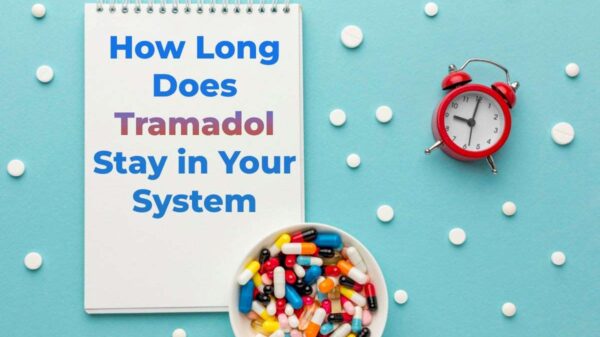Amoxicillin is a commonly prescribed antibiotic, effective against a wide range of bacterial infections. Like all medications, it’s crucial to understand the shelf life and proper use of amoxicillin to ensure its safety and effectiveness. This article explores the intricacies of amoxicillin expiration, its potential effects, and best practices for managing expired medications.
What Is Amoxicillin?
Amoxicillin is a penicillin family member and classified as a beta-lactam antibiotic. It works by inhibiting the synthesis of bacterial cell walls, ultimately causing the bacteria to die. This makes it an effective treatment for many bacterial infections, such as:
- Ear Infections (Otitis Media): Common in children, caused by multiple bacteria.
- Throat Infections (Pharyngitis and Tonsillitis): Typically caused by streptococcal bacteria.
- Respiratory Tract Infections (Pneumonia and Bronchitis): Effective against certain bacterial strains.
- Skin Infections: Such as cellulitis and impetigo.
- Urinary Tract Infections (UTIs): Often prescribed for uncomplicated UTIs.
Amoxicillin is available in many forms, including tablets, capsules, oral suspension, and is usually prescribed based on the patient’s age, condition, and ability to swallow pills.
How Is Amoxicillin Stored?
Proper storage plays vital role in maintaining the potency of amoxicillin. Each form of the drug has distinct storage requirements:
- Tablets and Capsules: Store in cool, dry place at temperature (20°C to 25°C or 68°F to 77°F). These should remain in their original container, tightly closed, to protect them from moisture and light.
- Oral Suspension: Requires refrigeration (2°C to 8°C or 36°F to 46°F) & should be used within 14 days after reconstitution. Shake the bottle well before each use.
Avoid keeping medications in bathrooms or near sinks, as humidity and temperature changes can compromise their stability.
Does Amoxicillin Expire?
Yes, like all medications, amoxicillin expires. Its effectiveness and safety are guaranteed only until the expiration date indicated on the packaging. After this date, the medication may lose potency, resulting in ineffective treatment and increased risk of complications. Always check the expiration date; if the medication expires, consult your healthcare provider before use.
Does Liquid Amoxicillin Go Bad If Refrigerated?
When appropriately refrigerated, liquid amoxicillin should be used within 14 days after reconstitution. Storing it longer than the recommended period or failing to maintain the proper temperature can cause the medication to lose effectiveness, become contaminated, or change appearance and consistency. If the liquid amoxicillin shows signs of spoilage, such as changes in colour, odour, or texture, it should be discarded.
Why Are Antibiotics Discarded After 10 Days?
Antibiotics, particularly liquid formulations like amoxicillin suspension, are often discarded 10 to 14 days after reconstitution because their potency and safety can degrade over time. The risk of bacterial contamination and changes in the formulation increases after this period. Proper disposal ensures expired or potentially compromised antibiotics don’t pose risks of inadequate treatment or contribute to antibiotic resistance.
What Happens If You Take Expired Amoxicillin?
Expired amoxicillin is not recommended, as the medication may not work as effectively. This can lead to prolonged illness, complications, or the development of antibiotic-resistant bacteria. While expired amoxicillin is unlikely to cause harm in small doses, it may fail to treat infections, which can delay recovery. Always consult a healthcare provider if you have expired medication.
What Happens If Amoxicillin Is Left Out?
If amoxicillin is left outside its recommended storage conditions, such as exposure to heat, light, or moisture, its effectiveness can be compromised. This can lead to a breakdown of active ingredients for tablets and capsules, reducing their ability to treat infections. Oral suspensions left at room temperature can change in consistency and flavour and risk bacterial contamination, rendering them ineffective or unsafe.
Does Amoxicillin Go Bad?
Yes, amoxicillin can degrade over time, which impacts its effectiveness and safety. Factors like exposure to moisture, heat, and light contribute to this degradation. Tablets and capsules may become sticky, discoloured, or crumble, while liquid formulations may thicken or develop a cloudy appearance. Always check for these signs before using any form of amoxicillin.
The Shelf Life of Amoxicillin
Shelf life of amoxicillin varies depending on the formulation. Tablets and capsules generally have shelf life of 2 to 3 years from date of manufacture. Oral suspensions, however, have a much shorter shelf life, typically around 14 days from reconstitution. Amoxicillin should be stored according to the manufacturer’s instructions and used before the expiration date to ensure maximum efficacy.
How Long Is Amoxicillin Good For After Expiration Date?
Like other antibiotics, Amoxicillin is not recommended for use beyond its expiration date. After the expiration date, medication may lose potency and not effectively treat bacterial infections. The safety of expired amoxicillin cannot be guaranteed, and using it could lead to inadequate treatment and the potential development of resistant bacteria. Always dispose of expired medications properly.
How To Dispose of Expired Amoxicillin
Proper disposal of expired medications is critical to avoid misuse and environmental contamination. Here are the best ways to dispose of expired amoxicillin:
- Medication Take-Back Programs: Many communities have take-back programs where you can safely discard expired medications. Check with your local pharmacy or health centre for information.
- Disposal in Household Trash: If a take-back program is unavailable, mix expired amoxicillin with an undesirable substance, similar as used coffee grounds or cat litter. Then, place it in sealed plastic bag and dispose of it in your trash. Be sure to remove any personal information from the prescription label.
- Avoid Flushing: Do not flush medications unless specifically instructed, as it can contribute to water pollution and harm aquatic life.
What to Do If You Have Expired Amoxicillin
If you discover that your amoxicillin has expired, do not use it. Instead, consult your healthcare provider for advice. They can provide a replacement prescription or suggest alternative treatments. Properly disposing of expired medications ensures you’re using safe and effective treatments.
How to Prevent Medication Expiration Issues
To avoid problems with expired medications, follow these tips:
- Regularly Check Expiration Dates: Keep track of expiration dates on all your prescriptions and over-the-counter medications. Dispose of any that are past their expiration date.
- Store Medications Properly: Follow storage instructions to maximize the shelf life of your medications.
- Keep a Medication Log: Maintain a log to track prescription and expiration dates. This can be particularly beneficial if you are managing several medications.
Conclusion
Amoxicillin remains an effective antibiotic within its shelf life, but like all medications, it has a limited period during which it remains safe and effective. Proper storage, regular checks for expiration, and safe disposal practices can ensure you always have access to safe and effective treatments. Avoid expired amoxicillin, as it may not work as intended and could lead to complications. Always check with your healthcare provider if you have any doubts about the safety of your medication.
















